Section 1.1 Plotting Points and the Coordinate Plane
Definition 1.1.1.
The coordinate plane is shown in the image below. It has two main lines that help you navigate it. The horizontal line that goes left-to-right across the plane is called the \(x\)-axis, and the vertical line that goes up-and-down through the plane is called the \(y\)-axis.
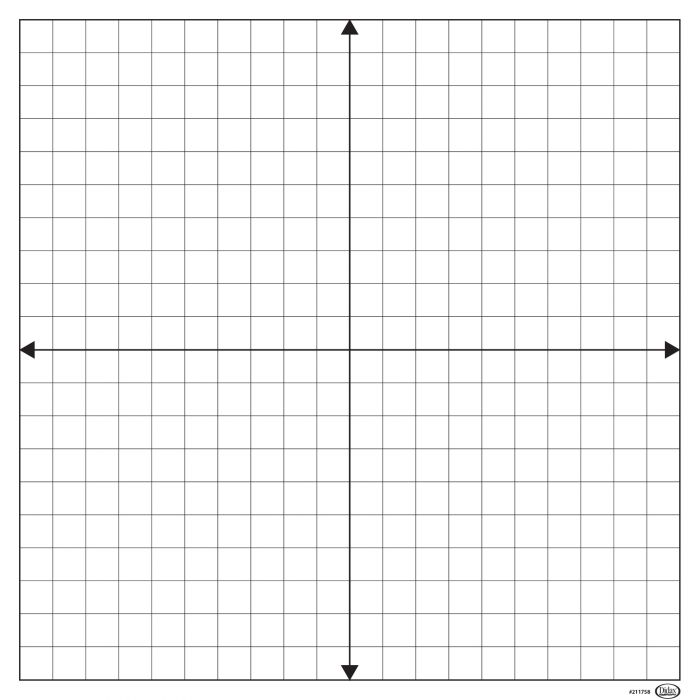
Fact 1.1.2. Plotting Points.
Points are written as two numbers, separated by a comma, with parentheses around them. To plot a point \((a,b)\text{,}\) the first number is the \(x\)-coordinate, which tells you how to move left-to-right along the \(x\)-axis, and the second number is the \(y\)-coordinate, which tells you how to move up-and-down along the \(y\)-axis.
Sometimes, we also called these ordered pairs, since it's a pair of numbers and the order we write them in matters.
Example 1.1.3.
Suppose we want to plot the point \((3,-5)\text{.}\) We see that the \(x\)-coordinate is \(3\text{,}\) which means we want to move to \(3\) on the \(x\)-axis. From there, we see that the \(y\)-coordinate is \(-5\text{,}\) so we will go down 5 (since it's negative). Once we have done both of those moves, we land at our final destination, shown in the graph below.
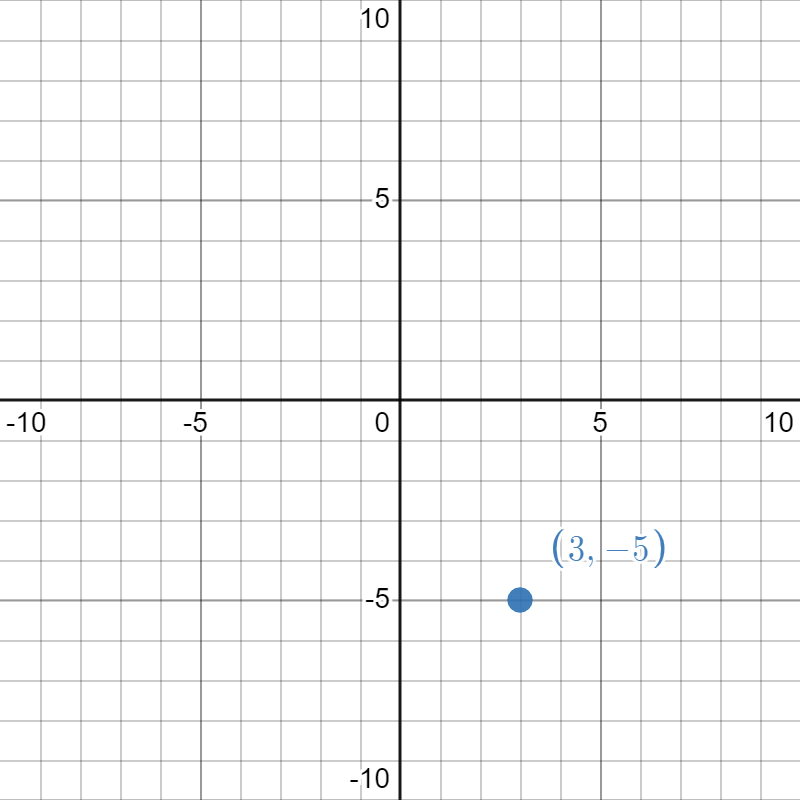
Checkpoint 1.1.4.
Plot the point \((-2,0)\text{.}\)
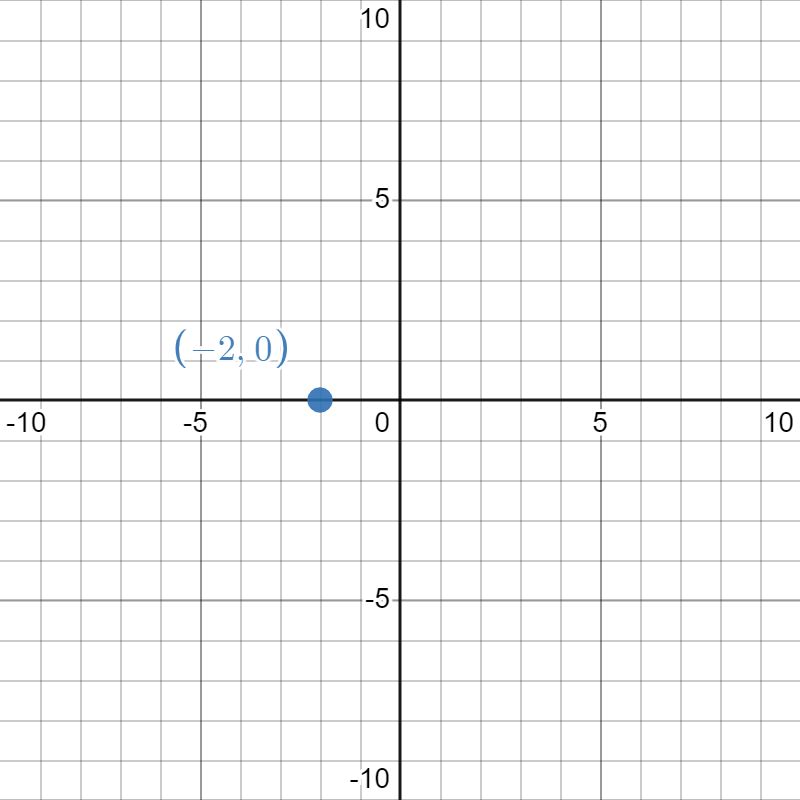
We see that the \(x\)-coordinate is \(-2\text{,}\) which means we want to move to \(-2\) on the \(x\)-axis (which is to the left, since it is negative). From there, we see that the \(y\)-coordinate is \(0\text{,}\) which means we actually don't need to move up or down at all. This point is on the \(x\)-axis. Once we have done both of those moves, we land at our final destination, shown in the graph below.

Example 1.1.5.
Suppose we want to figure out the coordinates of the point plotted below:
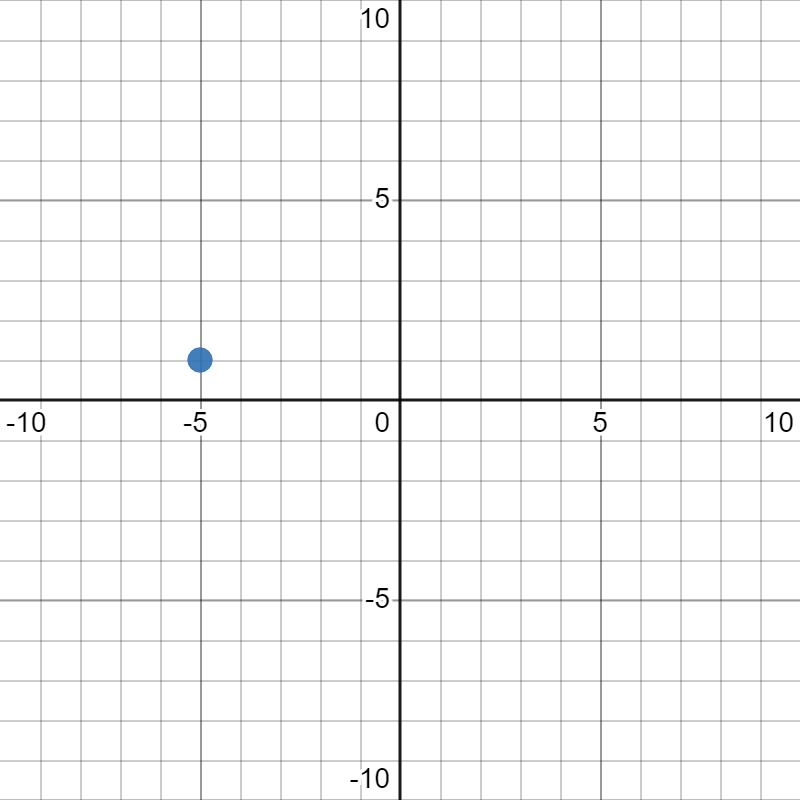
To figure out the \(x\)-coordiante, we trace up/down to the \(x\)-axis to see what number we land at. In this case, we trace down and see that we are at \(-5\text{,}\) so that is our \(x\)-coordinate. To figure out the \(y\)-coordiante, we trace left/right to the \(y\)-axis to see what number we land at. In this case, we trace to the right and see that we are at \(1\text{,}\) so that is our \(y\)-coordinate. Now that we have both coordinates, we can put it all together for our final answer: \((-5,1)\text{.}\)
Checkpoint 1.1.6.
Determine the coordinates of the point plotted below:
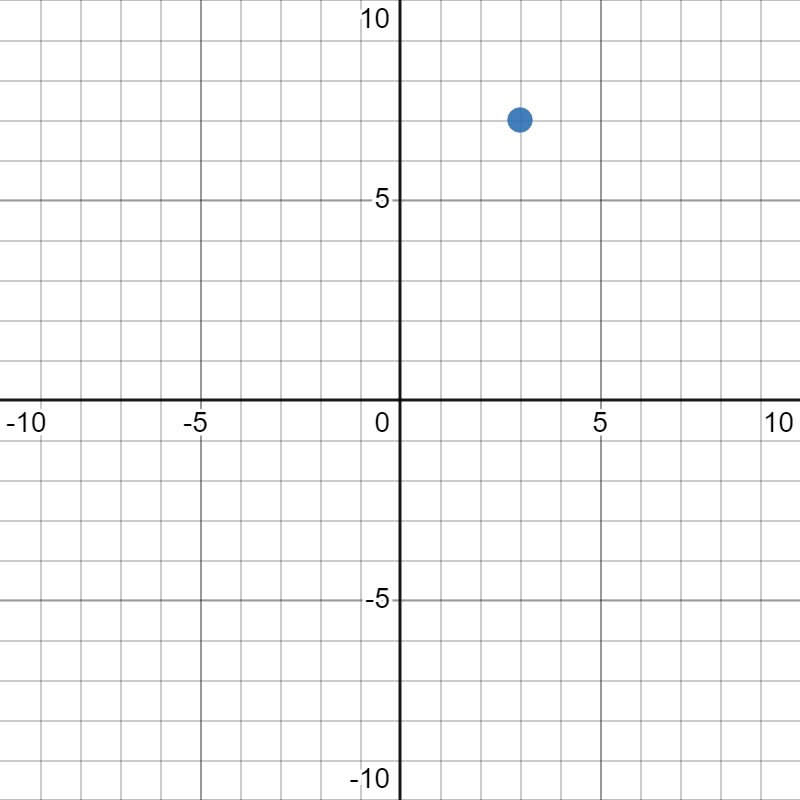
\((3,7)\)
To figure out the \(x\)-coordiante, we trace up/down to the \(x\)-axis to see what number we land at. In this case, we trace down and see that we are at \(3\text{,}\) so that is our \(x\)-coordinate. To figure out the \(y\)-coordiante, we trace left/right to the \(y\)-axis to see what number we land at. In this case, we trace to the right and see that we are at \(7\text{,}\) so that is our \(y\)-coordinate. Now that we have both coordinates, we can put it all together for our final answer: \((3,7)\text{.}\)